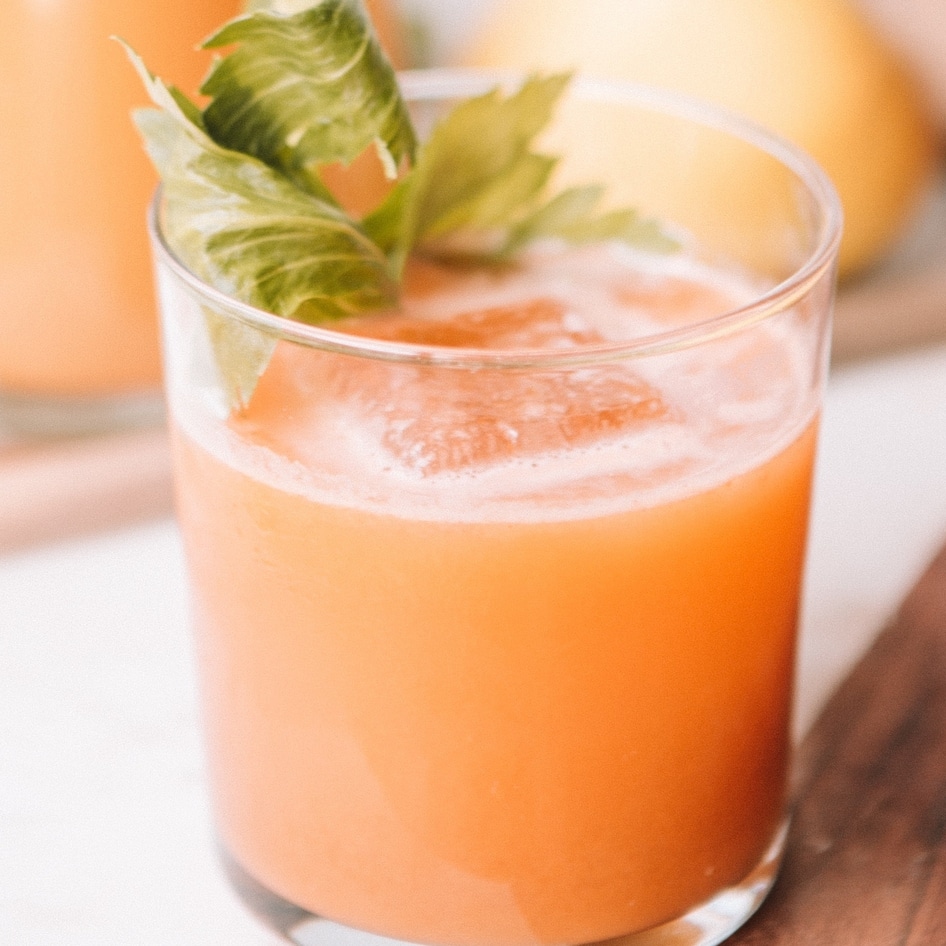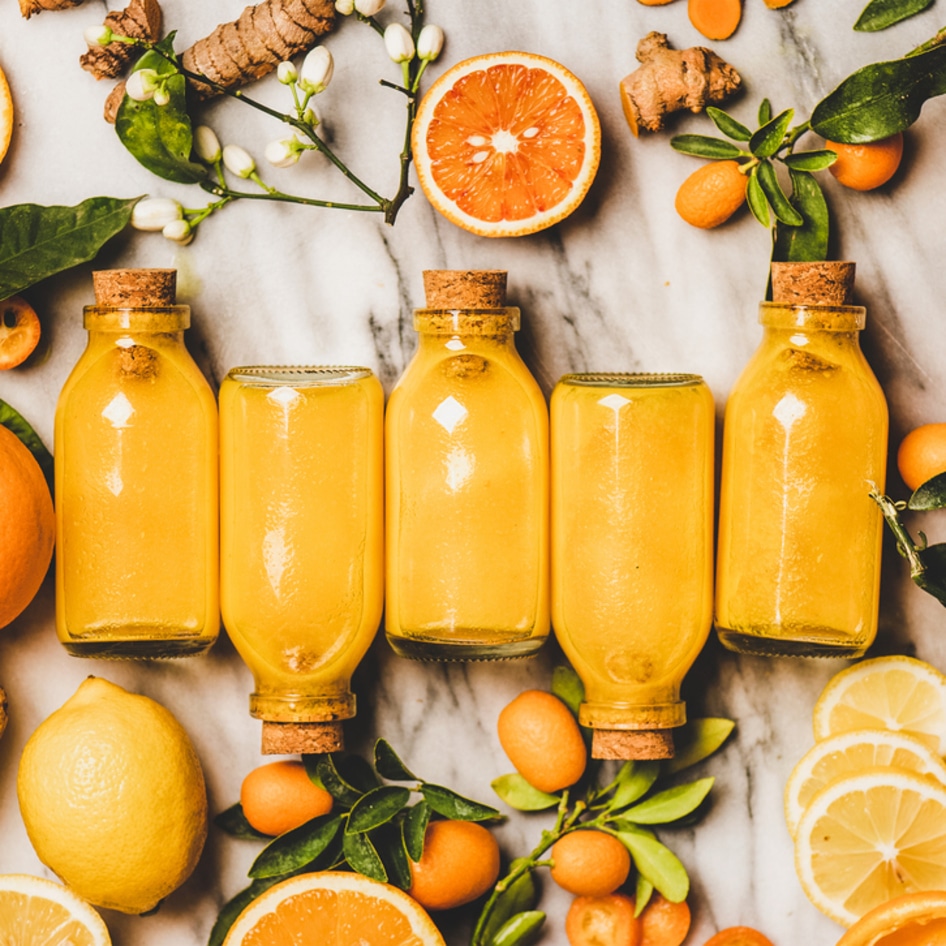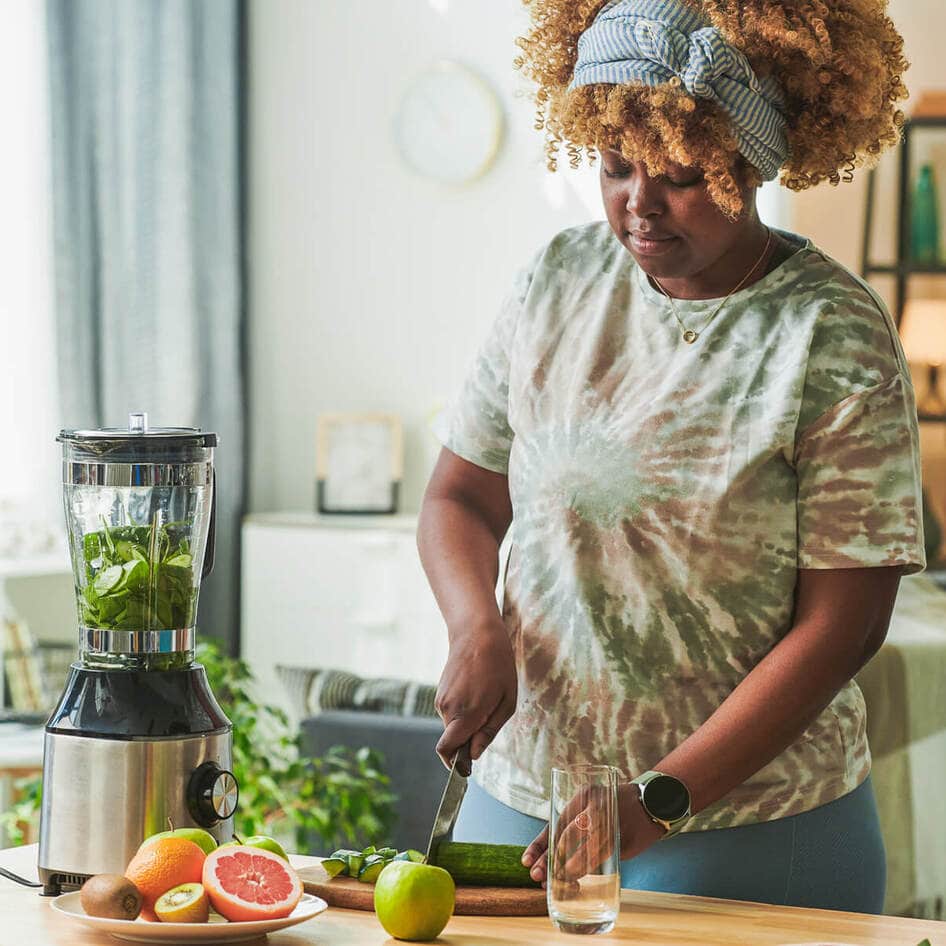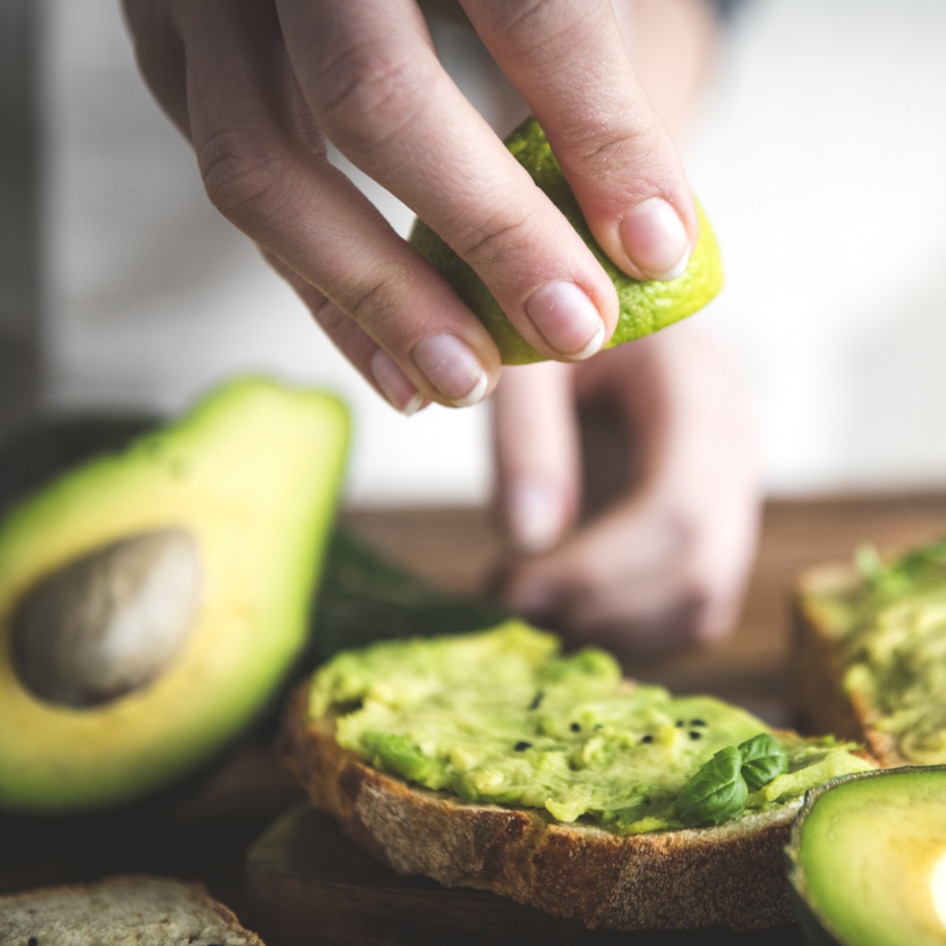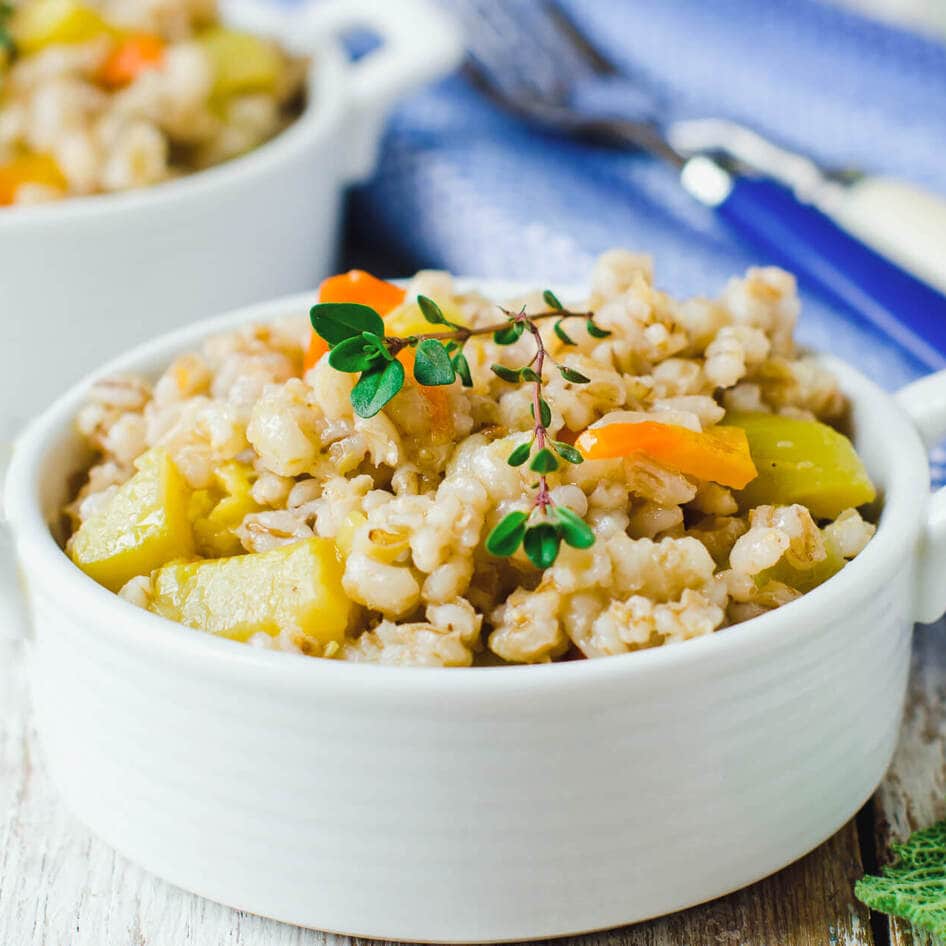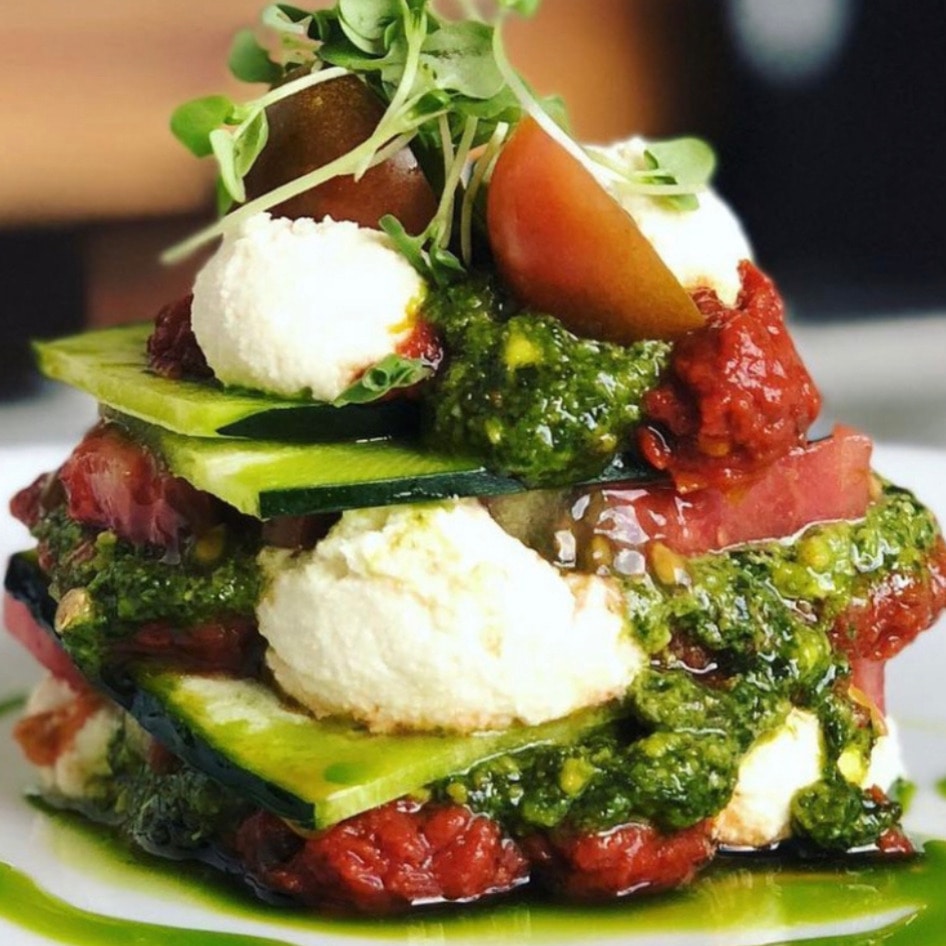Ultimate Guide to Juicing
From health benefits to how you make it, we’ve got the basics of this white-hot health trend to get you started on your juice journey.
June 2, 2016
Let’s talk about the growing juice trend—not your run-of-the-mill orange and apple varieties found on grocery store shelves, but all-natural, cold-pressed juices that are often more vegetable than fruit. You’ve probably heard of the power of green juices and juice cleanses, or perhaps you’ve seen bottled ones at your local coffee shop, but what exactly goes into juice and what are the benefits? Cold-pressed juices are made heatless by pounding piles of produce and smashing the liquid out of it, creating an easily digestible drink filled with raw nutrients. But while the tools needed for cold-pressed juices are inaccessible to most, you can make your own juice at home, chock full of health benefits at a fraction of the cost. Here is everything you need to know about the magical elixir known as juice and how you can brew a batch at home.
Tool Talk
To the unenlightened eye, juicers and blenders may seem interchangeable, but to the juice enthusiast, the two offer completely different benefits. Juicers, often more expensive and perhaps not as common on the kitchen countertop as blenders, extract the liquid and nutrients from raw vegetables and fruits, leaving behind the dry pulp. While this means you are able to consume more liquid nutrients before feeling full, you aren’t getting fiber in your juice. With blenders, fruits and vegetables are chopped up, pulp included; thus, you’ll get full faster but are filled with fiber. Those technical with names consider drinks made with a blender a smoothie, not juice. But names aside and your wallet in mind, be on the lookout for juicers that also function as blenders. It’s completely kosher to mix it up—interchanging smoothies and juices with a wide range of produce ensures you’re getting a rich variety of nutrients. Additional tools you may need for each juice session are vegetable scrubbers to clean your veggies and peelers in case your produce isn’t organic.
Produce Prep
When you’re picking up produce for your juices, it is important to consider buying organic since you’ll be consuming it raw—peel and all. Non-organic fruits and veggies are sprayed with pesticides and chemicals you probably don’t want in your system, but we definitely understand that organic comes at a higher price and not everyone has the pocket change to spare. So allocate your grocery funds for organic apples, celery, berries, and kale whenever possible, and feel free to use conventional avocados, cantaloupe, kiwi, or mangos in your smoothies. Apples and the rest of the first list are recorded as the most dirty and heavily sprayed crops whereas the latter were part of Environmental Working Group’s list of least contaminated produce. Don’t let grocery bills intimidate you—juicing doesn’t have to be a big budget thing. Make sure to give your produce a good scrubbing before tossing them in the juicer to remove dirt and contaminants.
Juice Journey
Keep in mind that with juices, because you are able to drink much more liquid nutrients before getting full, there’s the potential of consuming more sugar than your recommended daily intake—try to limit the amount of fruit you have in your juice as fruit contains natural sugars. Opt for veggies instead, especially of the green leafy variety for an extra powerful nutrient punch (kale, we’re looking at you), with just a little bit of fruit for flavor if needed.
According to justjuice.org, fresh juice should be consumed within 20 minutes for the full beneficial effect. But if you’re unable to drink it within 20 minutes, pour your juice into a glass jar with an airtight lid. Jarred juices will last in the refrigerator for up to three days, depending on what type of produce and juicer was used. Organic produce, which starts out with the highest amount of nutrients, will retain nutrients longer than conventional ones.
Top Tips
There are many reasons people choose to juice, just like there are many benefits juicing brings—stress relief, glowing skin, combating aging, and healthy weight management are just a few. This is why it’s key to tailor your juicing regimen to your goals, listen to your body, and do what’s best for you; for some, this may mean embarking on a three-day juice-only cleanse; for others, it means having a glass of greens for breakfast. It’s up to you. Try the following juice recipes targeted for specific benefits.
Stress relief
Glowing skin
Anti-aging
Low calorie, high nutrient
Now that you’ve brushed up on the basics, take to the kitchen and experiment. Try blending or juicing your favorite veggie combinations sprinkled with fruit or follow one of the above recipes to get started on your healthy juicing journey. Happy juicing!
JUMP TO ... Latest News | Recipes | Guides | Health | Shop

